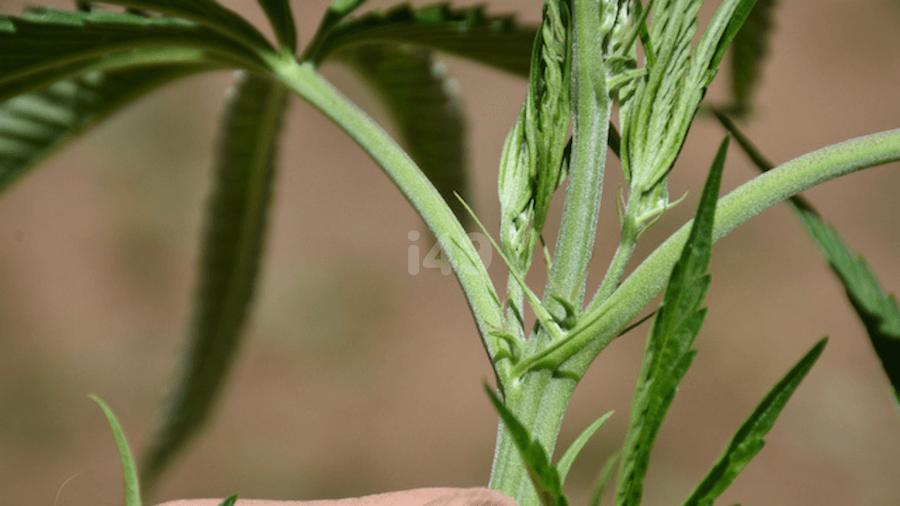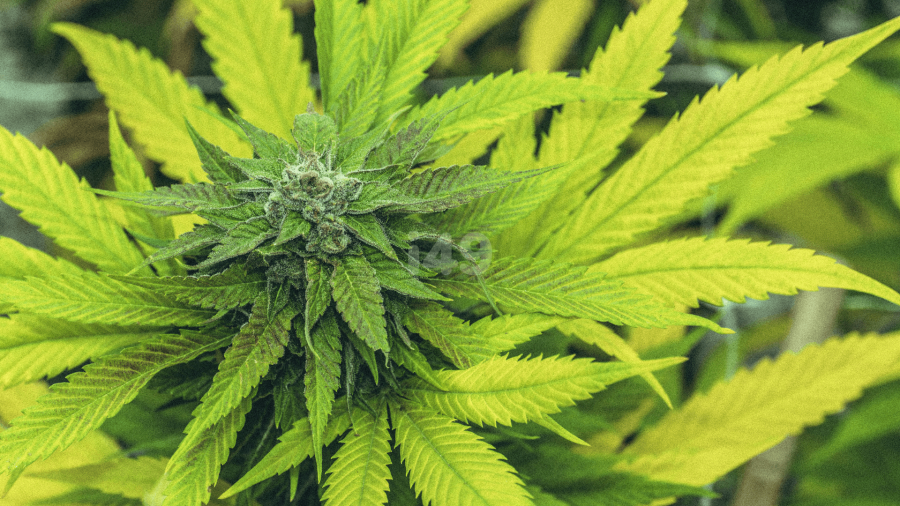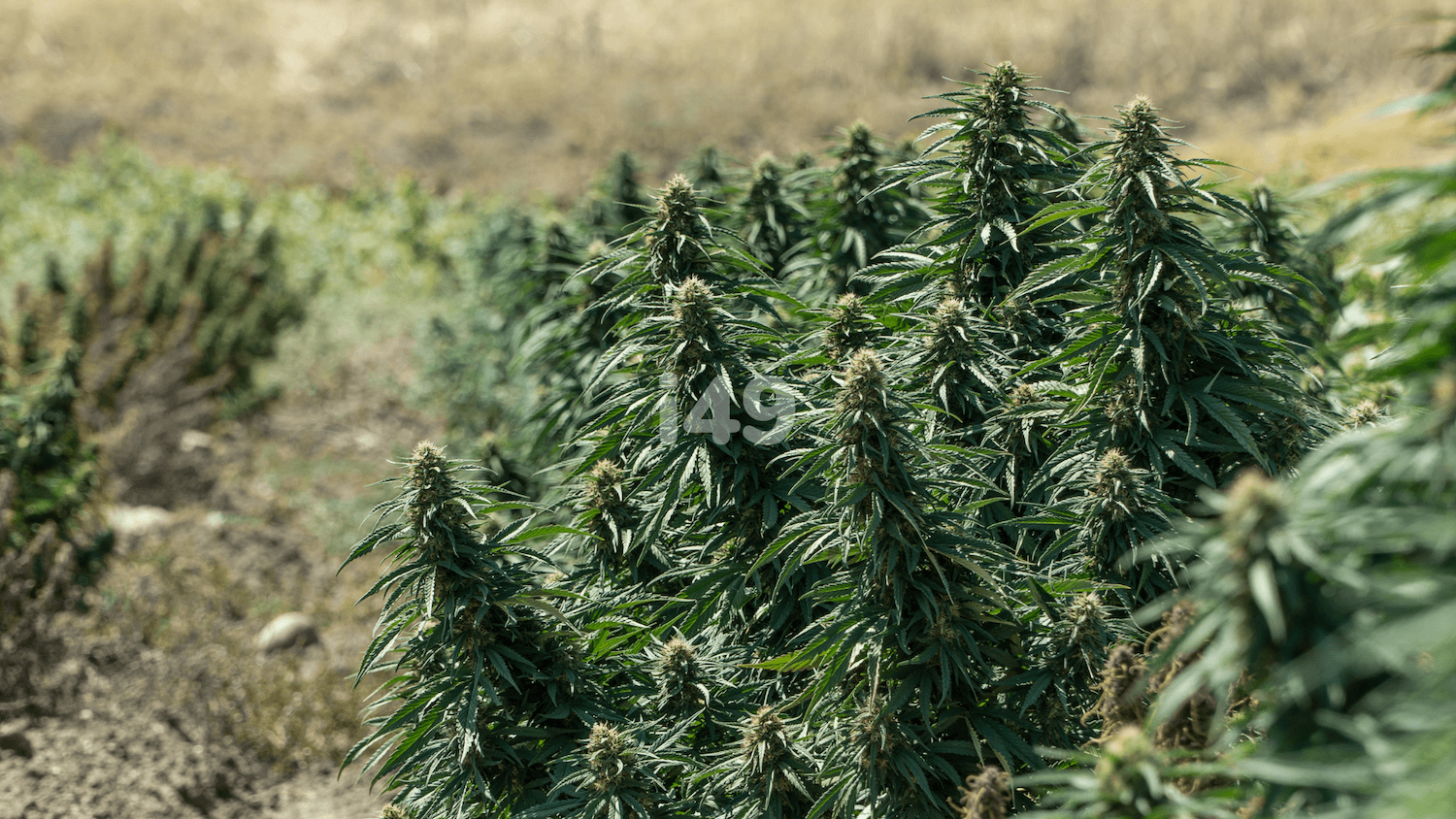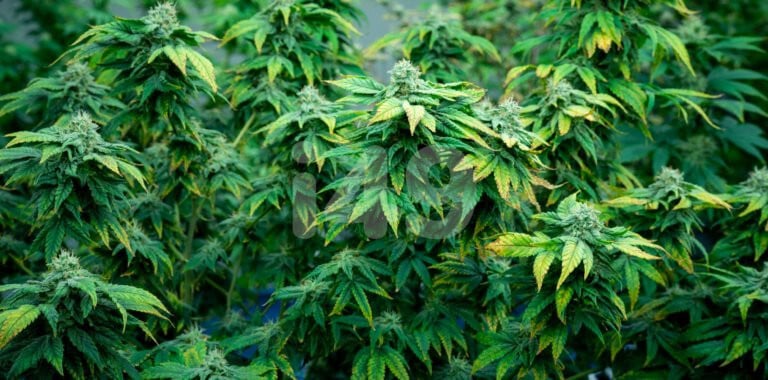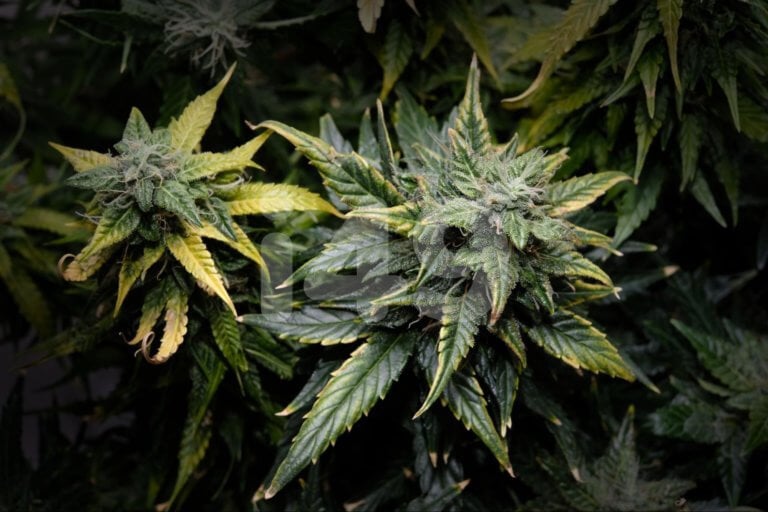Is your crop suddenly slow to sprout leaves, and new growth appears pale and deformed? You might be looking at a zinc deficiency in cannabis.
Although necessary in minuscule quantities, zinc is essential for plant development. Without it, your weed stops developing and might eventually wither.

Luckily, this trouble is easy to correct with some know-how. Keep reading to learn about zinc scarcity in marijuana. We discuss causes, signs, solutions, and prevention plans to nip future issues in the bud.
Let’s get to it.
What does zinc do for weed?
Zinc (Zn) is a metal found in the soil. It supports human, animal, and plant life. It’s essential from the moment you sow your cannabis seeds till harvest time.
In marijuana, zinc assists nutrient absorption and processing, photosynthesis, and growth cell synthesis. It also produces chloroplast to aid light processing, helps metabolize sugars, and stabilizes RNA and DNA for prolific seed genetics.
Zn plays a massive role in keeping weed in top form. When there’s a zinc deficiency in cannabis, new sprouts are weak, the foliage pales, and maturation grinds to a halt.
What are the reasons for a zinc deficiency in marijuana?
Weed deficiencies happen for a variety of reasons. The root zone requires specific conditions to absorb available nutrients, and shortages may occur even when you’re feeding enough.
A weed zinc deficiency results from the following inadequate conditions in the medium:
- Excess water. Overwatering causes moisture to linger in the substrate, preventing oxygen and mineral absorption. The roots eventually decay, and plants remain hungry.
- Excess pH levels. Cannabis absorbs food best in slightly acidic environments, so test your soil pH. If the reading is above 6.5 (or 6.0 for hydro), alkalinity may be obstructing zinc.
- Phosphorus (P) overload. P buildup induces chemical reactions that block zinc. This problem occurs in clay soils and hydro tanks running on phosphoric acid. It might appear due to a surplus of flowering-specific fertilizers, too.
Zinc troubles happen more frequently in organic growing conditions. All-natural cultivation is less susceptible to pH imbalances, but alkalinity is harder to catch and treat before it wreaks havoc on crops. If growing without chemicals, don’t disregard regular pH checks.
Note: Crop stress due to intense training and an unfitting climate can trigger a series of deficiencies, including a zinc shortage. Always examine your grow room conditions when you notice signs of ill health. Symptoms should clear once the environment is back to optimal.
How to identify a zinc deficiency in cannabis plants
Yellowing and growth abnormalities are standard with a zinc deficiency in weed. New leaves show signs of distress first, but general plant health eventually suffers. Let’s see how this concern manifests in the early, middle, and late stages.

Stunted and abnormal growth
Many nutrients are mobile, moving through the plant to perform their roles. For instance, when there’s a potassium deficiency, minerals go to new shoots, and old leaves suffer. It’s a different story with a zinc shortage.
This immobile nutrient gets absorbed by the roots, sent to the branches, and then stays there. When there’s a scarcity, young leaves and stems exhibit stunted growth. It manifests as:
- Tightly-packed, tangled leaves
- Closed and curled young blades
- A short distance between the nodes
New buds might also appear skinny and malnourished.

Since zinc regulates growth hormones, development abnormalities also follow its scarcity. Fresh shoots are sometimes thin and curled, while branches and stems get stretchy and lanky.
Yellow and patchy leaves

A zinc deficiency in cannabis leads to leaf chlorosis, a scientific term for the loss of chlorophyll. The green pigment depletes, and the blades become pale and yellow. As discoloration progresses, leaf tips and edges might get a rusty hue.

A spotted or patchy pattern appears after several weeks without zinc. Dead spots pop up and spread around the foliage, working their way down the stem. This yellowing and spotting impact the blade first; the veins remain green for some time longer.

Spotting and crop death
With time, yellowing spreads around the crop and leads to rust-like spotting. The blades start twisting at the outer margins as chlorosis drains all chlorophyll. Several days later, the leaf is crumbly and splattered with dead patches. It eventually falls off the plant.
The buds also suffer if scarcities happen in the flowering stage. They don’t fatten without zinc, remaining light and airy even near harvest time.

This final stage sounds like a doomsday scenario for your cultivation efforts! Let’s see what you can do to avoid it.
How to fix a cannabis zinc deficiency
A healthy dose of the best cannabis fertilizers fixes most mineral shortages, but only when secondary conditions are in order. Otherwise, you waste money on nutrients inaccessible to the root zone. Proper treatment requires a strategic approach.
Here’s how to fix a zinc deficiency in plants and prevent it from returning.
Flush the growing medium
Excessive salt, pH imbalances, and poor-quality fertilizers hinder mineral absorption. Before grabbing your nutrient solution, flush the medium to remove excess chemicals.
When you flush your cannabis plant, treat it with pure water to neutralize the substrate. Here’s how to do it in soil:
- Get four times the container size of pH-neutral water. So, 4 gallons for a 1-gallon pot.
- Slowly shower the earth around your crops. Let the moisture drain at the bottom.
- Let the pot dry in a breezy spot before providing more aqua or minerals.
Check the pH levels of the runoff to see whether all buildup has drained. Its pH levels should be under 6.5 by the fourth gallon.
If using a hydroponic system, drain the tank and wipe it clean. Then let pure water circulate in it for 24 hours before supplying additional feed.
Replenish with nutrients
Once your medium is clear of minerals and pH-balanced, it’s time to replenish with nutrients.
If using tap water, a regular marijuana nutrient solution is just what you need. Follow the manufacturer’s instructions on feeding dose and frequency.
If showering plants with reverse-osmosis water, amend the liquid with a micronutrient mix. Zinc sulfate and chelated zinc will also do the trick, but combine them with a CalMag supplement to ensure absorption.
Feed the foliage
A cannabis zinc deficiency leaves the crop hungry and ill. Regular nutrient supplements restore balance with time, but you can speed up the healing process with foliar feeding.
Foliar treatments involve spraying the canopy with a solution of water and another chemical. It’s a standard treatment for pests on weed and a fast-acting leaf feeder.

When you dissolve zinc in water and apply it to the foliage, the blades absorb this mineral in large quantities. Spray the young and affected growth that hasn’t died yet, focusing on pale and curled leaves without spots.
This solution won’t replace a steady soil zinc source in the long term, but it’s an effective short-term treatment.
Manage the consequences
The steps above help a nutrient balance restore and mineral scarcity symptoms clear. All that’s left is to nurse your crop back to health.
Plant stress can be detrimental while your garden recovers from a cannabis zinc deficiency. Maintain optimal conditions, feed and water in moderation, and avoid training. If planning to flip the lights during this period, do so gradually.
Removing dead leaves also aids recovery. Burnt blades are a breeding ground for pathogens and could become home to pests or fungus. Trim them away to make room for healthy growth.
Extra root care won’t hurt, either. Treat the medium with perlite or coco coir to increase its aeration and regularly check pH levels. You might also consider transplanting the crop into fresh soil once it stabilizes.
Spot, cure, and prevent
Zinc is an essential mineral, and its lack may cause severe damage. Luckily, marijuana can recuperate from most health issues with the right actions on your part. Watch for signs of distress and act fast. Follow our tips to see the symptoms disappear.
Remember the reasons behind this cultivation pitfall and bypass them in every next gardening endeavor. Monitor pH levels, feed and water well, and shelter your crops from stress.
While learning the ropes of nutrient management, choose resilient cultivars capable of bouncing back from deficiencies. Visit our shop for a vast selection of strain seeds perfect for the purpose.



